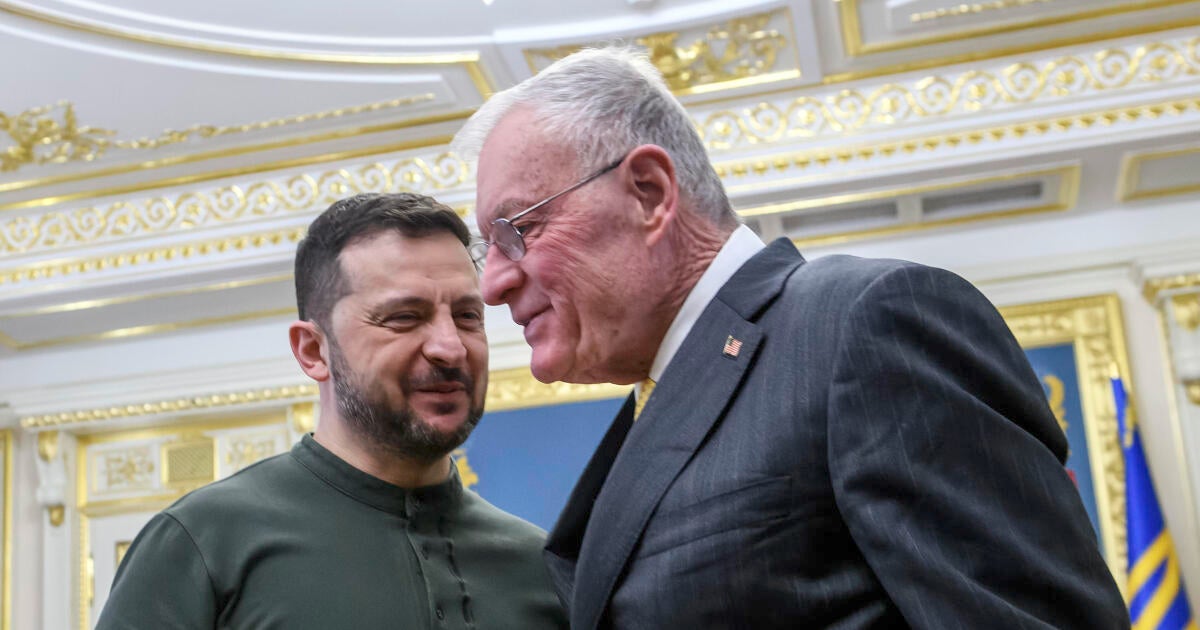Federal prosecutors were directed by U.S. Attorney General Pam Bondi this week to pursue the death penalty against Luigi Mangione, the man accused of murdering United Healthcare CEO Brian Thompson last year in New York City.
Mangione allegedly shot Thompson as the executive was headed to a healthcare conference on Dec. 4, mowing down the father of two on the street. The 26-year-old faces federal murder and stalking charges and 11 state charges, including murder and terrorism charges, which are not eligible for the death penalty.
“After careful consideration, I have directed federal prosecutors to seek the death penalty in this case as we carry out President Trump’s agenda to stop violent crime and Make America Safe Again,” Bondi said in a statement Tuesday.
Mr. Trump signed an executive order on his first day in office directing the Department of Justice to seek the death penalty where applicable. “This move is one in a series of moves for the Trump administration to ‘restore’ the federal death penalty,” said Corinna Barrett Lain, death penalty expert and a law professor at the University of Richmond School of Law.
The Mangione case is the first high-profile one to come under his administration’s directive, Lain said; however, the federal death row landscape has changed dramatically since Mr. Trump’s first term – and the appetite for executions nationwide has plummeted. In 2024, there were 26 new death sentences; in 2004, there were 125, she said.
New York State, where Mangione’s crime was allegedly committed, abolished the death penalty in 2007, according to the Death Penalty Information Center, a not-for-profit organization based in D.C. According to their tracking, although there were prisoners on New York State’s death row in 2007, an execution hasn’t taken place since Eddie Mays in 1963.
Federal prosecutors might find themselves in the same situation with Mangione, Lain said, who has written a book on lethal injection, as it can take a federal death penalty case at least two decades to wind its way through the legal system.
The federal death penalty is in all 50 states and U.S. territories but is used relatively rarely compared to states. How it is applied is decided by a policy the U.S. Department of Justice has written in their justice manual, Robin Maher, executive director of the Death Information Policy Center, told CBS News.
The manual details how – or why – federal prosecutors decide to seek a federal death sentence, said Maher.
“It’s not clear that that process has been followed with respect to this decision to seek death for Mr. Mangione,” Maher said.
The U.S. Department of Justice said the death penalty can only be imposed on defendants convicted of capital offenses – such as murder, treason, genocide, or the killing or kidnapping of a Congressman, the President, or a Supreme Court justice. Mr. Trump expanded the scope in his January executive order, saying federal prosecutors will seek the death penalty, “for the most serious, readily provable offenses.”
Each case is authorized by the Department of Justice headquarters in Washington, D.C., in consultation with local U.S. Attorney offices, who prosecute the cases.
A number of federal death sentences were prosecuted in states that have abolished the death penalty, the Death Information Policy Center said. Inmates who have received a federal death sentence are executed at the federal death chamber in the U.S. Penitentiary Terre Haute in Indiana.
Most federal executions are carried out by lethal injection – until 2020, it was the sole method of execution. Methods were then expanded to include ones authorized by the state in which the federal death sentence was imposed, this could be by firing squad, such as the recent execution in South Carolina, or by nitrogen gas, which was used in Alabama and Louisiana.
Between the reinstatement of the federal death penalty in 1988 and 2024, 80 defendants were sentenced to death and 16 were executed.
Under the previous Trump Administration, 13 people were executed over 6 months in 2020 – 2021, DPI confirmed to CBS News.
Federal death row prisoners from all over the country are housed in the Special Confinement Unit at U.S. Penitentiary Terre Haute in Indiana.
Many death row inmates die from old age, Lain said, and many are never executed. Cases can take at least a decade to wind through court and millions to judge, “is this a life worth saving?” said Lain, who said each death row case has two trials, one for the crime and the other for sentencing. In effect, criminals are being sentenced to “life without parole with a random chance of execution,” and the government is paying millions for the prosecution, she said.
There are three prisoners currently on federal death row, Roberts Bowers, who was convicted in 2023 for the mass shooting at Tree of Life Synagogue, Dylann Roof, who was convicted in 2017 for the for the fatal shooting of nine parishioners in a church in South Carolina and Dzhokhar Tsarnaev for the 2015 Boston Marathon bombing.
Then-U.S. Attorney General Merrick Garland put a moratorium on federal executions in place shortly after taking office so that an internal DOJ review of execution policies and practices could take place, Maher said. That moratorium on executions was in place until the end of the Biden Administration.
Former President Joe Biden commuted the death sentences of 37 out of 40 federal death row prisoners to sentences of life without parole on Dec. 23, 2024, before he left office.




